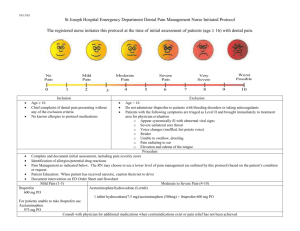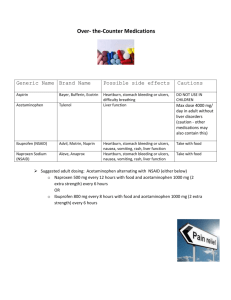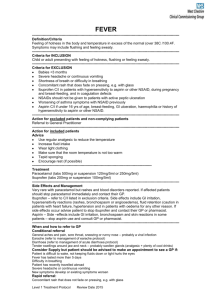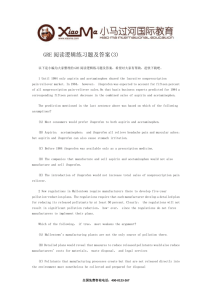Read a summary of the research methods and results
advertisement
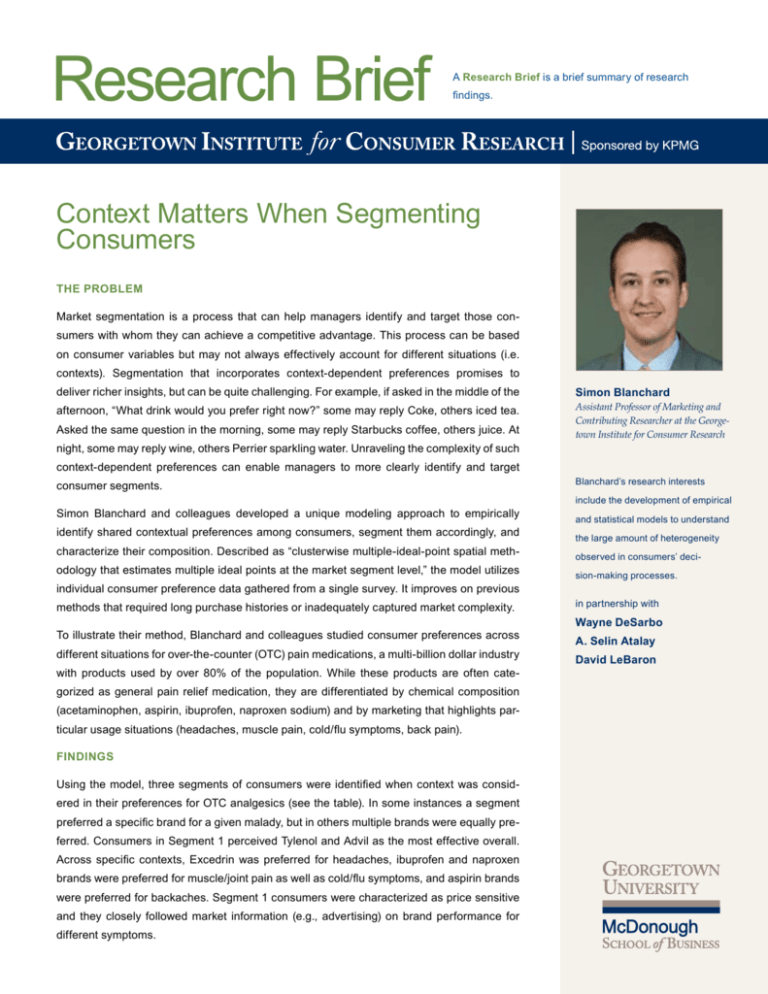
Research Brief A Research Brief is a brief summary of research findings. Context Matters When Segmenting Consumers THE PROBLEM Market segmentation is a process that can help managers identify and target those consumers with whom they can achieve a competitive advantage. This process can be based on consumer variables but may not always effectively account for different situations (i.e. contexts). Segmentation that incorporates context-dependent preferences promises to deliver richer insights, but can be quite challenging. For example, if asked in the middle of the afternoon, “What drink would you prefer right now?” some may reply Coke, others iced tea. Asked the same question in the morning, some may reply Starbucks coffee, others juice. At night, some may reply wine, others Perrier sparkling water. Unraveling the complexity of such Simon Blanchard Assistant Professor of Marketing and Contributing Researcher at the Georgetown Institute for Consumer Research context-dependent preferences can enable managers to more clearly identify and target consumer segments. Simon Blanchard and colleagues developed a unique modeling approach to empirically identify shared contextual preferences among consumers, segment them accordingly, and characterize their composition. Described as “clusterwise multiple-ideal-point spatial methodology that estimates multiple ideal points at the market segment level,” the model utilizes individual consumer preference data gathered from a single survey. It improves on previous methods that required long purchase histories or inadequately captured market complexity. To illustrate their method, Blanchard and colleagues studied consumer preferences across different situations for over-the-counter (OTC) pain medications, a multi-billion dollar industry with products used by over 80% of the population. While these products are often categorized as general pain relief medication, they are differentiated by chemical composition (acetaminophen, aspirin, ibuprofen, naproxen sodium) and by marketing that highlights particular usage situations (headaches, muscle pain, cold/flu symptoms, back pain). FINDINGS Using the model, three segments of consumers were identified when context was considered in their preferences for OTC analgesics (see the table). In some instances a segment preferred a specific brand for a given malady, but in others multiple brands were equally preferred. Consumers in Segment 1 perceived Tylenol and Advil as the most effective overall. Across specific contexts, Excedrin was preferred for headaches, ibuprofen and naproxen brands were preferred for muscle/joint pain as well as cold/flu symptoms, and aspirin brands were preferred for backaches. Segment 1 consumers were characterized as price sensitive and they closely followed market information (e.g., advertising) on brand performance for different symptoms. Blanchard’s research interests include the development of empirical and statistical models to understand the large amount of heterogeneity observed in consumers’ decision-making processes. in partnership with Wayne DeSarbo A. Selin Atalay David LeBaron Consumers in Segment 2 perceived aspirin-based brands as most effective overall. Aspirin- Key Points based brands were also perceived most effective for muscle/joint pain, but ibuprofen and • Consumers maintain brand naproxen based brands were preferred for headaches, and acetaminophen brands were pre- and product preferences that ferred for cold/flu symptoms. Segment 2 consumers were characterized as germ conscious are contextually specific. and athletic. • Blanchard developed a Consumers in Segment 3 perceived non-aspirin brands as most effective overall. Ibuprofen model to identify segments and naproxen brands were seen as effective for headaches; acetaminophen brands were which share contextual preferred for muscle/joint pain, aspirin brands for cold/flu symptoms, and Tylenol was pre- preferences. ferred for backaches. Consumers in this segment were younger, anti-medication, and unlikely Context to use OTCs when ill. • Once a segment is identified, marketers can Segmentation Based on Shared Contextual Preferences for OTC Meds use characterizing traits to Segment 1 Segment 2 Segment 3 optimally target marketing Overall Tylenol, Advil (acetaminophen/Ibuprofen) Vanquish, Bayer, Bufferin, Anacin, St. Joseph (aspirin) Advil, Motrin, Aleve, Tylenol (ibuprofen/naproxen/acetaminophen) Headache Excedrin (acetaminophen/aspirin) Advil, Aleve, Motrin, Nuprin (ibuprofen/naproxen) Advil, Motrin, Aleve (ibuprofen/naproxen) Muscle/Joint Advil, Motrin, Aleve (ibuprofen/naproxen) Vanquish, Bayer, Bufferin, Anacin, St. Joseph (aspirin) Tylenol, Excedrin (acetaminophen/aspirin) Cold/Flu Advil, Motrin, Aleve (ibuprofen/naproxen) Tylenol, Excedrin (acetaminophen/aspirin) Vanquish, Bayer, Bufferin, Anacin, St. Joseph (aspirin) Backache Vanquish, Bayer, Bufferin, Anacin, St. Joseph (aspirin) St. Joseph, Bufferin, Bayer, Anacin (aspirin) Tylenol (acetaminophen) campaigns. IMPLICATIONS & CONCLUSIONS Normally, a marketing manager would study consumer preferences for their brand versus competitors’ brands for specific consumer needs. However, when the consumer’s preferences are considered across a variety of contexts, brand preferences become less clear. As the table shows, each segment has a portfolio of brands that vary according to the type of pain experienced. A marketing manager for Excedrin may communicate an offer to Segment 1 with an emphasis on headaches, reinforcing its perceived effectiveness. Excedrin does not emerge as a specifically preferred brand in other segments, despite the fact that its composition includes both acetaminophen and aspirin, ingredients identified by consumers in Segments 2 and 3 as relevant for muscle/joint pain and cold/flu symptoms. Discovering this, a manager for Excedrin may rethink how to position its product and how to communicate it to these two segments. While the model was applied to OTC analgesics, it can be utilized for other categories of products and services as well. Managers should start by asking: Are we in a category for which consumers may vary what they purchase according to different situations? If so, studying segments with respect to context will be very important for their marketing strategies and actions. Whether or not sophisticated modeling is used, managers must think about the types of consumer research data to collect to begin to add clarity to the complexity of consumer behavior. Source: DeSarbo, W S., Atalay, A. S., LeBaron, D., and Blanchard, S.J. (2008). Estimating Multiple Segment-Level Ideal Points from Context Dependent Survey Data, Journal of Consumer Research, 35, 142-153. This Brief, based on the work of Simon Blanchard et al., was composed by Chris Hydock in collaboration with Simon Blanchard. The Georgetown Institute for Consumer Research, Sponsored by KPMG, develops innovative, ground-breaking research to illuminate the challenges and opportunities of understanding and marketing to consumers. For more information, visit http://consumerresearch. georgetown.edu
